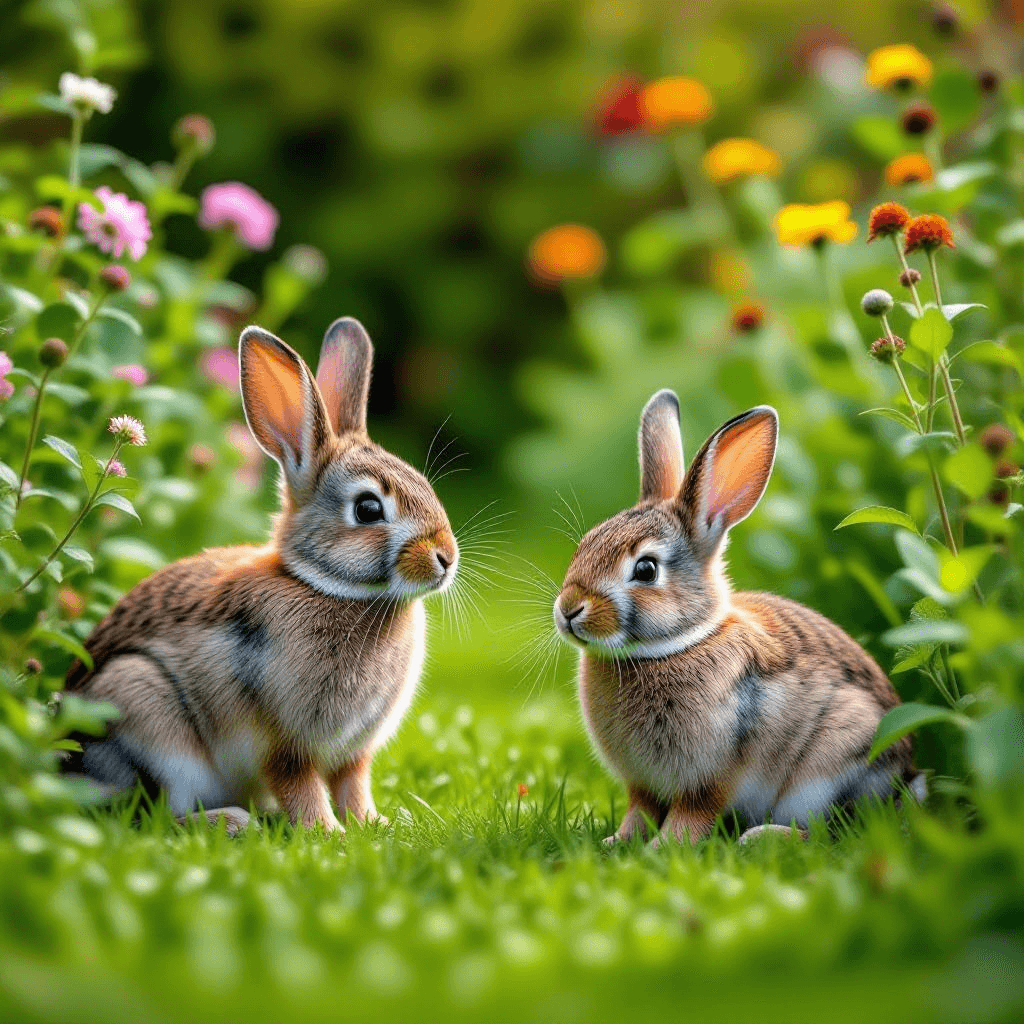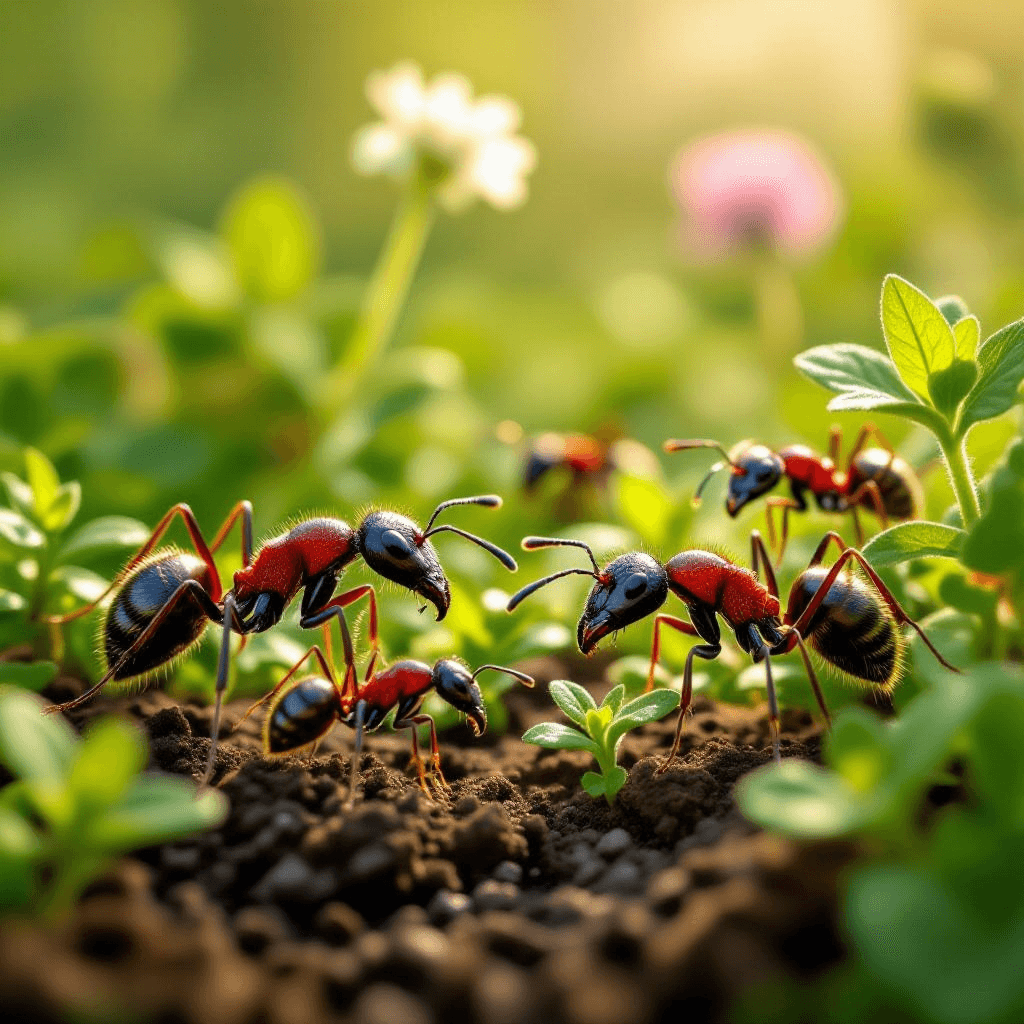Understanding the Threat: Rabbits and Deer in the Garden
Rabbits and deer are common garden pests that pose significant threats to cultivated plants. These animals are naturally drawn to gardens due to the abundance of fresh vegetation, which provides not only sustenance but also the opportunity for safe foraging away from natural predators. Gardeners must recognize that both rabbits and deer have particular feeding preferences that may directly impact the health and yield of their plants.
Rabbits typically favor tender, young shoots and leafy greens, making vegetables such as lettuce, spinach, and carrots particularly vulnerable. They also are known to nibble on flowers, herbs, and young fruit plants. This opportunistic feeding behavior often leads to severe damage in gardens if not addressed promptly. On the other hand, deer have a broader palate and are attracted to a wide variety of plants, including shrubs, flowers, and garden vegetables. They tend to prefer plants with high moisture content, which can often lead them to consume entire sections of a garden.
The impact of these animals on garden health can be profound. Aside from the damage caused by eating the plants, their presence can also lead to increased stress on the plants, making them more susceptible to disease and pests. Furthermore, repeated foraging can inhibit the growth of perennials and shrubs, ultimately reducing the overall yield and aesthetic quality of the garden. Understanding the behavioral patterns of rabbits and deer is crucial for gardeners. These animals are most active during dawn and dusk, which means gardens may be particularly vulnerable during these times. By comprehending these habits, gardeners can better prepare and implement effective strategies to deter these invasive species and protect their gardens.
Fencing Solutions: The First Line of Defense
When it comes to protecting your garden from rabbits and deer, fencing solutions serve as one of the most effective methods of deterrence. Selecting the right fencing material and design is crucial to ensure that these animals do not invade your green space. Various options are available, each with distinct advantages and disadvantages that need to be considered.
One popular choice for garden fencing is chicken wire. Its open structure makes it a budget-friendly option for keeping smaller pests such as rabbits at bay. Typically, a height of at least four feet is recommended, though for deer, a fence height of eight feet or more is required. While chicken wire is relatively easy to install, it may not withstand the pressure of larger animals, making it less durable in the long run.
Wooden fencing, whether it’s a solid panel or a picket style, provides not only aesthetic appeal but also effective deterrence against deer. With a height typically around six to eight feet, wooden fences can discourage both rabbits and deer when properly aligned. The primary downside is the cost; wooden fencing is often more expensive than other materials and may require regular maintenance to prevent rot and decay.
Another effective option is chain-link fencing, which combines durability with visibility. Its height can be adjusted, and it is resistant to various weather conditions, ensuring longevity. However, chain-link fences may require additional enhancements, such as barbed wire or an overhang, especially for preventing deer from jumping over. These extra measures can increase both the cost and complexity of installation.
Installation techniques significantly affect the fence’s effectiveness. Ensure that the fence is buried at least a few inches below the ground to thwart any rabbits attempting to dig underneath. Additionally, properly straining the wire and ensuring vertical alignment can maximize the barrier’s effectiveness. Assessing the terrain and ensuring that there are no gaps will further enhance the overall success of your fencing solution.
Natural and Chemical Repellents: Keeping the Pests at Bay
The challenge of protecting your garden from rabbits and deer necessitates the use of effective repellents. A variety of natural and chemical options exist, each with distinct properties that can help deter these pests. Natural repellents include substances derived from plants, such as garlic and hot pepper, which can be easily mixed with water to create a spray. These homemade mixtures, while eco-friendly, often require frequent reapplication—especially after rain or watering—to maintain their effectiveness.
Commercial repellents, available on the market, often contain predator urine or putrescent egg solids, which can create an olfactory deterrent for rabbits and deer. They are generally more potent than homemade options and can offer extended protection, lasting several weeks before needing reapplication. When utilizing chemical repellents, users should be mindful of the potential impact on beneficial wildlife and consider non-toxic options that minimize environmental harm.
To achieve optimal results, applying repellents in a strategic manner is crucial. Focus on applying them around the perimeter of your garden as a barrier, and target areas where the animals are most active. Additionally, combining repellents with physical barriers, such as fencing, can significantly enhance their deterrent effects. This multifaceted approach can lead to greater protection and reduce the likelihood of damage from these herbivores.
It is important to remember that while repellents can mitigate the threat posed by rabbits and deer, they are not a surefire solution alone. Regular monitoring of your garden for signs of distress or damage is essential. Gathering insights into which repellents yield the best results can further refine your strategy, assisting gardeners in effectively safeguarding their plants and ensuring the long-term health of their gardens.
Other Deterrents: Creative Approaches to Garden Protection
In the pursuit of safeguarding your garden from rabbits and deer, implementing a variety of creative deterrent strategies can be highly effective. Companion planting, for example, involves strategically positioning certain plants that exhibit characteristics that repel these unwanted herbivores. Plants such as marigolds and lavender have been known to deter rabbits due to their strong scents and taste. By integrating these plants into your garden design, you not only enhance the visual appeal but also create a natural barrier against potential threats.
Another approach involves the use of sensory deterrents, which capitalize on discomfort rather than physical barriers. Noises and movements that can startle rabbits and deer can be incredibly useful. Garden wind chimes, reflective materials, or even a motion-activated sprinkler system can create an unpredictable environment that these animals are likely to avoid. Such deterrents often require minimal maintenance and can be an attractive addition to your outdoor space while providing essential protection for your plants.
The role of pets and natural predators in deterring both deer and rabbits should not be underestimated. Dogs, in particular, can act as effective guard animals, their presence often being enough to encourage these animals to steer clear of your garden. Similarly, encouraging local wildlife that feeds on rabbits and deer, such as foxes or hawks, can further secure your plants from potential damage. By creating a habitat that is welcoming to these natural predators, you can foster a balanced ecosystem that benefits your garden.
By incorporating these diverse methods, gardeners can enjoy a more holistic approach to protecting their plants. Combining traditional techniques with innovative strategies allows for a comprehensive defense system against the challenges posed by rabbits and deer, creating a thriving garden environment.


